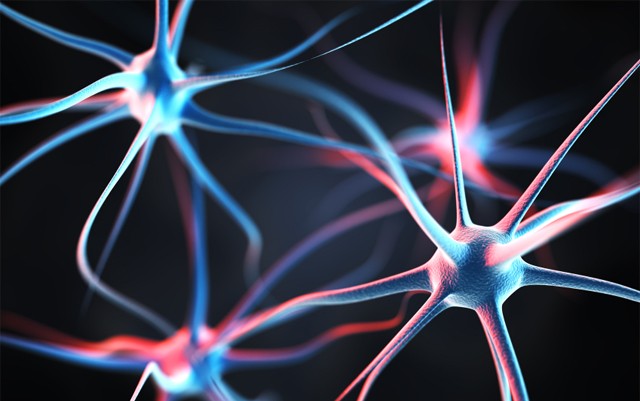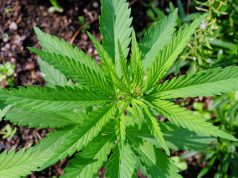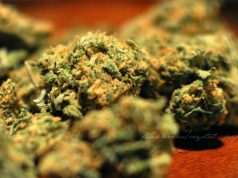Have you ever wondered why marijuana affects us the way it does? What is it that makes THC and CBD react with our bodies, healing and offering relief to the ill? What makes this plant such a diverse medicine, able to treat such a large number of vastly different conditions?
If you had asked this question fifty years ago, there wouldn’t have been an answer for you to find. Unfortunately, the extraction methods available in the early 1900s made it difficult to determine which one of the 80+ cannabinoids found in cannabis was the psychoactive cannabinoid responsible for the effects of marijuana.
The truth is, it’s only been in the last couple of decades that scientists have truly even begun to understand the ways cannabis works within our bodies.
It all started with a scientific breakthrough in 1964, when a scientist from Israel named Raphael Mechoulam was able to identify and isolate THC for the first time – just prior to which they were able to identify CBD as well.
Being able to isolate these cannabinoids for the first time was the first stepping stone in discovering the endocannabinoid system – a biological system that can be found in just about any living thing with vertebrae.
“By using a plant that has been around for thousands of years, we discovered a new physiological system of immense importance,” says Raphael Mechoulam, the dean of the transnational cannabinoid research community. “We wouldn’t have been able to get there if we had not looked at the plant.”
In 1988, the first cannabinoid receptor was found in the brain of a rat. Initially found by Allyn Howlett and William Devane these cannabinoid receptors turned out to be plentiful in the brain – more so than any other neurotransmitter receptor.
Soon after this discovery researchers started using a synthetic form of THC (which is actually FDA approved these days, to treat severe nausea and wasting syndrome) to start mapping the CB receptors in the brain. Not much of a surprise, the receptors were located primarily found in the regions responsible for mental and physiological processes including memory, higher cognition, motor coordination, appetite and emotions among other places.
This would only begin to explain how cannabinoids affect our brains and bodies – already however, it was becoming clear that cannabinoids likely played a larger part in our physiology than we ever expected. After all, why would we have cannabinoid receptors if cannabinoids could only be delivered from external sources?
It wasn’t until two years later in 1990 before the next big breakthrough; when Lisa Matsuda announced at the National Academy of Science’s Institute of Medicine that she and her colleagues at the National Institute of Mental Health had managed to pinpoint the DNA sequence that defines a THC-sensitive receptor in a rat’s brain.
Not long after this announcement they were able to successfully clone that receptor – allowing them to create molecules that “fit” or “activate” the receptors. Scientists were also able to develop genetically altered mice that lacked this specific receptor – meaning THC should have no effect on them.
When THC was given to the “knockout mice” as they were called, they found that because the THC had nowhere to bind, there was no way to trigger any psychoactive activity – proving once and for all that THC works by activating specific cannabinoid receptors in the brain and central nervous system.
Soon after, in 1993, a second cannabinoid receptor was found – as a part of the immune and nervous systems. Dubbed CB2 (the CB receptors in the brain officially dubbed CB1 receptors) receptors they are found to be plentiful throughout the gut, spleen, liver, heart kidneys, bones, blood vessels, lymph cells and even the reproductive organs.
However that curious, pesky question remained unanswered – why do we have cannabinoid receptors in the first place?
The answer to that question started to unfold in 1992, when the first endocannabinoid was discovered. Anandamide was the first, naturally occurring endogenous cannabinoid, or endocannabinoid. It was found by Raphael Mechoulam as well as NIMH researchers William Devane and Dr. Lumir Hanus.
This is still only one of two known and relatively well-understood endocannabinoids. It attaches to the same CB receptors as THC and it was named after the Sanskrit word for bliss.
A second endocannabinoid was identified in 1995, discovered by none other than Mechoulam’s group yet again. This second major endocannabinoid was dubbed 2-arachidonoylglycerol or “2-AG” to keep it simple. This particular endocannabinoid attaches to both CB1 and CB2 receptors.
It was these discoveries, working backwards, tracing the metabolic pathways of THC, which allowed scientists to discover an entirely unknown molecular signaling system that resides within us – and within thousands of other biological lifeforms, basically everything on our planet with the exception of insects.
Due to the role cannabis played in discovering this system it was rightfully named the endocannabinoid system. While we knew about the plant first – this cellular process has been happening within us for millions of years. According to Dr. John McPartland, the system started evolving as long ago as 600 million years back – when complex life meant a sponge.
There is evidence that a possible third CB receptor has still gone unidentified, thirteen years after the CB2 receptor was initially discovered.
Since then, we have found out that the endocannabinoid system is responsible for maintaining many of our normal bodily functions – everything from helping to maintain healthy bone density (as found in a study with mice and the previously mentioned “knockout mice”) to naturally preventing diabetes – and that’s only the beginning.
It’s interesting to see how far we’ve come – fifty years ago THC had just been identified – now, thanks to the discovery of that one cannabinoid we’ve discovered an entire molecular system within our bodies that we never knew about.
Actually, the endocannabinoid system is possibly the single-most important system within our entire bodies – responsible for maintaining homeostasis. Basically, if our endocannabinoid system is out-of-whack, your whole body could be at risk as it is responsible for many of our normal day to day functions.
The possibilities that come with understanding the endocannabinoid system are practically endless. This one system helps to regulate almost every aspect of our well-being – meaning if we can learn to manipulate these receptors (with use of cannabinoids from cannabis) we could possibly have the answer to not only curing diseases, but preventing them all together.
Is it so hard to think that if supplementing unbalanced naturally occurring endocannabinoids with the cannabinoids from cannabis is able to manage, relieve or control a condition (such as ALS, Parkinson’s or Alzheimer’s) and even cure cancer – that it might be possible to use the same process to prevent such conditions in the first place?
“I now believe the answer is yes. Research has shown that small doses of cannabinoids from cannabis can signal the body to make more endocannabinoids and build more cannabinoid receptors. This is why many first-time cannabis users don’t feel an effect, but by their second or third time using the herb they have built more cannabinoid receptors and are ready to respond. More receptors increase a person’s sensitivity to cannabinoids; smaller doses have larger effects, and the individual has an enhanced baseline of endocannabinoid activity. I believe that small, regular doses of cannabis might act as a tonic to our most central physiologic healing system.” – Dustin Sulak, DO (Taken from a blog post from NORML.org)
While there is not much specific scientific data to support these claims, it’s only a matter of time. We’re learning more and more every year about cannabis and the endocannabinoid system. Just look at how far we’ve come in half a century – look at how differently cannabis is viewed by millennials versus how our grandparents viewed it at our age.
In the article by Sulak on NORML.org, there was a quote he used that particularly stuck out to me…
“There were never so many able, active minds at work on the problems of disease as now, and all their discoveries are tending toward the simple truth that you can’t improve on nature.” – Thomas Edison, 1902
The thing here is, this is still 100% true today, over 100 years later. There are thousands of brilliant men and women working in pharmaceuticals, working to create medicines to do exactly what cannabis is already capable of doing. Why do we (humans), always think we have a better way to do things?
Why do we have FDA approved drugs that mimic THC and are potentially stronger than naturally occurring THC – yet the plant that gave way to that drug is considered a highly dangerous drug with no medical value?
People are starting to see however, that sometimes, the best solution is a natural one. One that has been around and been used for thousands of years to treat conditions of all sorts. With the understanding of the endocannabinoid system comes the chance to bring the truth about cannabis to light – finally allowing us to understand how one plant can have such a positive impact on so many different ailments.
Now that we’ve all got a good understanding of exactly how the endocannabinoid system was discovered through cannabis, it will be easier to understand how the endocannabinoid system works. So be on the look-out for the next installment – The Chemistry of Cannabinoids and the Human Body – where we will look at how cannabinoids THC and CBD lock-on to the CB receptors, in turn causing the medicinal benefits that people have come to trust over more traditional medicines.







I have brain cancer and I have seziours and a broken back and I smoke everyday and that’s really the only way I can get through my day!! It was a fascinating read thank u!!
Great foundational article! Looking forward to reading the rest of the series
I enjoy you!re articles Julia..Honesty is always refreshing..Good work..It takes courage to own the truth..La Buscador..Keep searching..
The possibility of using cannabis and the byproducts of is unlimited. I lost my son at the hand of his father. My ex husband stopped smoking pot because of the DARE program. Some people in our neighborhood had their children taken from them because the children very innocently stated during a DARE program at school “my mommy and daddy have some of that, pictures being shown of pot”. So. He stopped smoking and started drinking heavy. Alcohol is legal. So from stopping weed in 1987 and drinking way more. In Mary of 2008 he murdered our son. 29 years old. I am not saying pot could have saved my son’s like but……I have NEVER seen anyone get in an argument while using cannabis
Wow what an intense and terrible story – so sorry for your loss. Seeing something like this first hand must make it so intense to see such rampant abuse of alcohol contrasted with cannabis prohibition.
Thank you for that reading. It helped me learn more about how and why cannibus has such a profound effect on our body and mind. I look forward to seeing what the future looks like as we learn to harvest the potential of this plant. I am a retailer in Oklahoma City, OK. Please suggest more readings on how cannibus interacts with our body. And please direct me on suggesting a proper dosage for those with particular dire medical situations. I’ve read 300 mg per day shown improvement with Parkinson’s. So learning more specific studies dosages would be helpful for my customers.